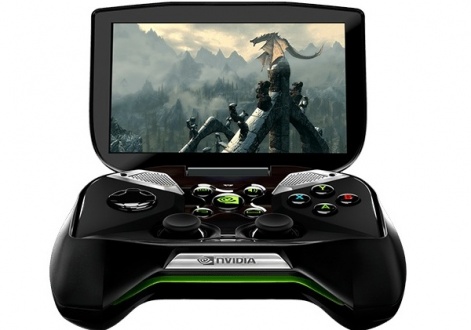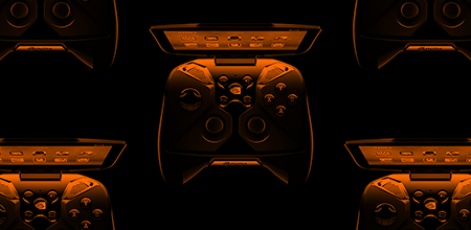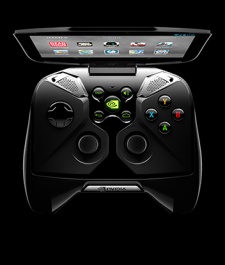At first glance, it comes across as a cut-and-shut Frankencontroller abomination. It's as if Microsoft's lamentable first generation Xbox controller has had a screen literally superglued to the top of it.
It might have a face that only a mother could love, but I find myself strangely drawn to the prospect of Nvidia's divisive new creation.
The backlash surrounding the device reminds me of the incredulous reaction to the Nintendo DS reveal in 2004. Few could see the point of it. It looked like a Fisher Price toy for kids. It wasn't powerful enough. And so on.
Back then most commentators looked at what Sony was doing with the PSP, and wrongly assumed it would wipe the floor with Nintendo's offering. It didn't.
With Project Shield, the situation is a hell of a lot more complex, which makes it easier for everyone to dismiss it out of hand before they've even had a hands-on.
You are a target market
When it emerges, it will be hitting an increasingly fragmented market, and trying to fit somewhere between the mobile market, traditional home consoles, and streaming gaming services like OnLive.
The many arguments against its existence seems to be that it's neither powerful enough to be a compelling console, nor is it particularly useful as a portable gaming system.
While the games shown off at CES hardly quicken the pulse, few people in the know doubt that the Tegra 4 chipset will provide a decent platform to run any Android game you can throw at it for the next few years.
Whether gamer will genuinely be excited about the prospect of playing Android games via a joypad is a moot point.
Firstly, if you really want to play Android games via a joypad, there are plenty of ways of doing so already - at a fraction of the price. With Ouya, Gamestick, and others heading our way soon as well, you soon won't be able to move for Android-based machines with controllers as standard.
Physical attraction?
A more pertinent point when it comes to controlling Android games with a joypad is the fact that most mobile games really don't need them.
Developers have been perfecting games to make the most of touch and tilt-based controls for years now. Converting them to use traditional controls quite often makes them worse.
But that's not to say that there aren't a truckload of catalogue titles out there that won't benefit enormously - especially the many re-issues of older classics like Grand Theft Auto: Vice City.
On top of that, the impressive power of Tegra 4 puts new full-fat console titles fully within reach of developers. Rather than having to develop cut-down mobile versions of big-name titles, the potential will be there to port 360 and PS3 titles.
That's all it is, though - potential, and it strikes me that Project Shield is more about offering a proof of concept tech demo for the Tegra 4 chipset than anything.

From Nvidia's point of view, showing a tangible product generates far more buzz than merely bunging out a chipset with a new number on it.
That said, the main thing that will pique a lot of people's attention is the ability to stream Steam games from an Nvidia GTX-equipped PC.
Using similar tech to that employed in the Wii U's Gamepad, the promise will be of lag-free PC gaming over wifi. The question remains whether anyone really wants that.
Screen burn
It's a question I've been pondering a lot recently, with the whole 'Second Screen Gaming' issue becoming quite a compelling option for the couch-based player.
Unless you're living alone, you're going to find your main TV out of action more often than not, and being able to carry on gaming while your better half, or family member hogs the screen can be a major bonus.
Unwittingly, a lot of people have already become conditioned to this sofa-based gaming conundrum, and get their fix via their phones or tablets, or perhaps via their PS Vitas and 3DS.
But as the Wii U has proven lately, being able to continue to play your favourite 'full fat' games on a handheld device can work brilliantly.
As long as the display is big enough, and the controls are comfortable, it's a great substitute for the big screen experience. If Project Shield manages to do that for PC gaming without any compromises, there's a fair chance it could carve itself a niche.
Whether it's more than a niche remains to be seen, and rides largely on Nvidia's ability to convince a highly sceptical audience awash with alternatives.
If we assume that this is mainly just a means of getting other consumer electronics companies to buy Tegra 4 chips, then perhaps the fate of Project Shield is something of an irrelevance in the long run - a mere proof of concept for others to take the risk on, or simply a vanity project that hasn't been fully sanity checked yet.
Either way, 2013 is already shaping up to be an exciting year, full of strange experiments and attempts to disrupt the status quo.























